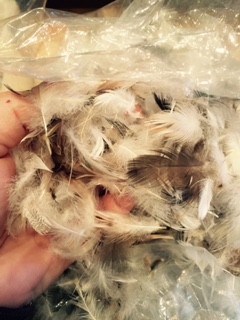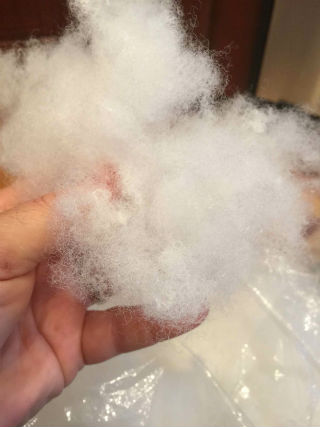Join Our VIP Email List
Keep up to date on deals, promos, and sales.
Posted by Heather Galloway on Jul 11th 2015
If you’ve ever just dashed into the store to purchase a pillow, you have discovered first-hand that all pillows are not created equal. There are features of a pillow that will drastically affect your enjoyment. Some aspects are obvious, such as shape and filling, while some are less apparent, such as stitching quality and case covering.

You always want high-quality stitching, so that stuffing remains on the inside. A “safety stitch” (a single stitch on the inner seam and a serge seam on the outer seam) is a great way to do this and will even keep little duck feathers in place. Case covering can be a matter of preference, but also varies according to the pillow’s purpose. A cover made of 100% cotton (with a thread count over 200) will be soft to the touch and keep feathers from poking through. A non-woven polyester cover is very durable, and a good choice for floor pillows or outdoor pillows. Polyester/cotton blends are a good choice for everyday pillow covers. That said, I would argue that it’s what’s on the inside that really counts.
While humans have been stuffing pillows with feathers for over a thousand years, we’ve certainly come a long way. A down/feather combination is a luxurious option that also maintains a pillow’s shape. There are many possible combinations between the goose down and duck feathers, from 10/90 to 50/50. The suppleness (and price) of the pillow goes up as the percentage of the down increases.
Polyester fill joined the market in the past century. While there are variations in the types of fibers (and the way they’re processed), this is the most common pillow fill used. It’s hypoallergenic and budget-friendly, although not nearly as plush as feather pillows. If you want a feel similar to a down/feather pillow (but without the allergens and/or higher cost), you can go with synthetic down fill. This contains a fiber that’s a fraction of the normal polyester fill fibers, giving you the "staying power" of a down pillow with all the benefits of a hypoallergenic pillow.

Of course, each passing year seems to bring more and more pillow options. You can now find eco-friendly fiber filling (made from recycled plastic fibers), polystyrene beads, foam, wool, horsehair, rubber, buckwheat, and more. Beyond that, we’re doing much more with pillows than just sleeping on them: improving home aesthetics, making the outdoors more comfortable, pampering a pooch, transporting a wedding ring down the aisle, supporting a pregnant belly, or hiding a gift for the tooth fairy. So, next time you need a pillow, take a moment to find the best pillow for your needs (and your budget).
Keep up to date on deals, promos, and sales.